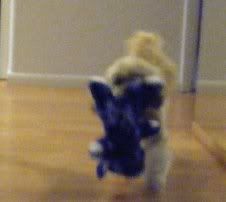
Last summer, my cousins and I were playing with Kyle’s Indo board. Every time I tried, I always fell off right away. However, Kyle could keep moving on it for a long time and even do some crazy tricks. The Indo board reminded me of a concept we learned in physics. In order to stay on the board my cousin would have to make sure his center of mass was always supported. The center of mass is the average location of mass. The center of mass has to be supported in order to be balanced or else the object will fall over.
 The equation for the center of mass is: XCM= (m1x1 + m2x2 +…mnxn) / (m1 + m2 +…mn). Next time I go to my cousin’s house and go on the Indo board again, I have to make sure my center of mass is supported so I do not fall off. Hopefully if I get better, my cousin can teach me some tricks.
The equation for the center of mass is: XCM= (m1x1 + m2x2 +…mnxn) / (m1 + m2 +…mn). Next time I go to my cousin’s house and go on the Indo board again, I have to make sure my center of mass is supported so I do not fall off. Hopefully if I get better, my cousin can teach me some tricks.





